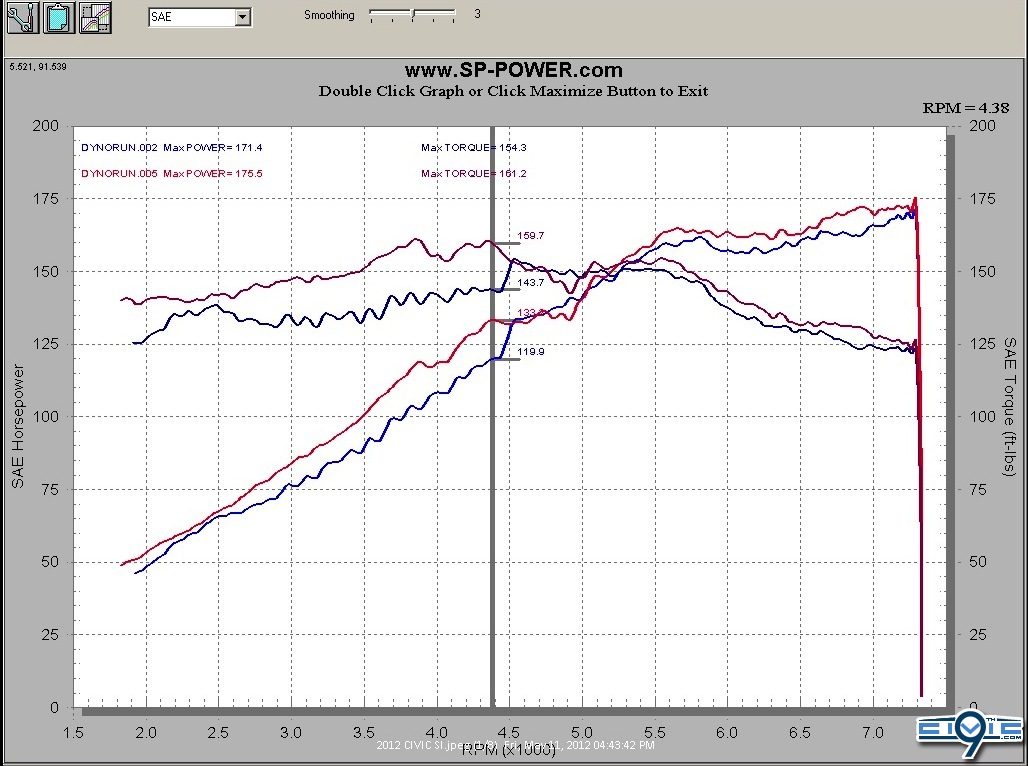Arm0ged0n
Well-Known Member
Ok the time has come. The dyno company is SP-Power. They did 3 runs on the dyno with the stock intake and 3 runs with Injen's intake. As you will see, the gains varied throughout the RPM powerband (i.e. the gains peaked at about 3800 rpms). The gain in torque and the gain in HP is seen by the gap in between the two-lines. Note there are two lines comparing Torque, and another 2 lines comparing HP.
The baseline numbers below use the gains at 4400 RPMs. NOTE: these numbers depicts one of the three runs; the one with the middle-range results (not the lowest, not the highest)
TORQUE
Stock: 143.7
Injen: 159.7
A gain of 16 lbs.
HORSEPOWER
Stock: 119.9
Injen: 133.2
A gain of 13.3 horsepower

The baseline numbers below use the gains at 4400 RPMs. NOTE: these numbers depicts one of the three runs; the one with the middle-range results (not the lowest, not the highest)
TORQUE
Stock: 143.7
Injen: 159.7
A gain of 16 lbs.
HORSEPOWER
Stock: 119.9
Injen: 133.2
A gain of 13.3 horsepower



 lol
lol
